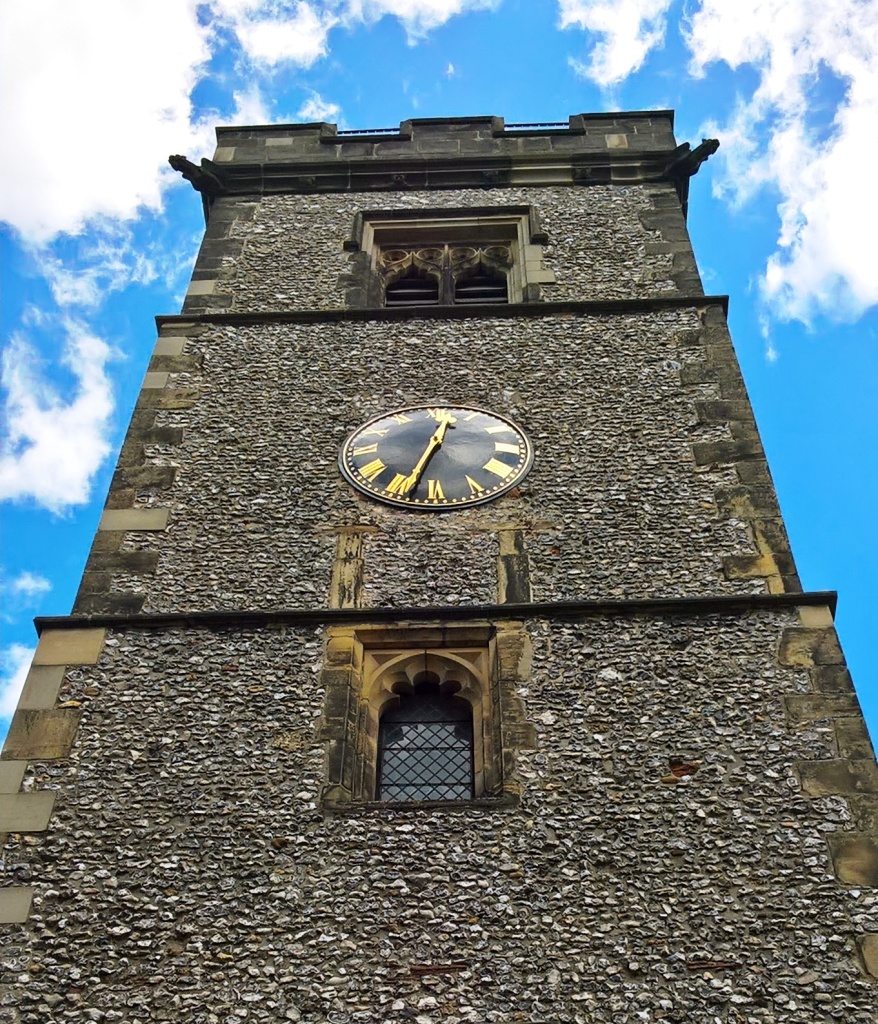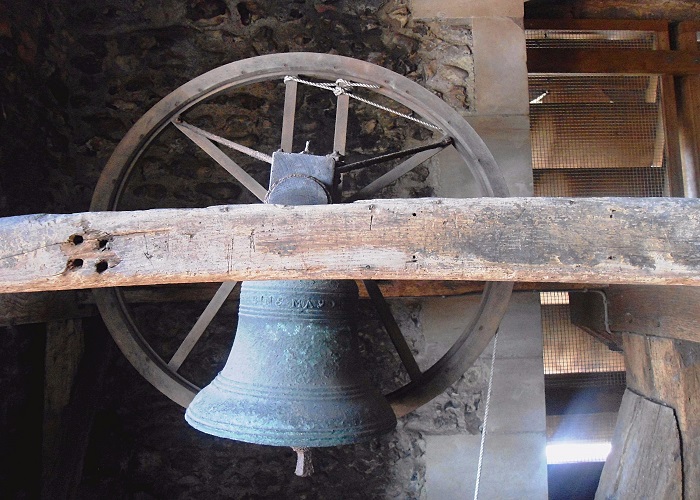
St Albans is a medieval yet modern up-market town at the same time with many restaurants and chic shops but a charming history too.
“You’ll get there in a jiffy, there are only 93 steps.” said the enthusiastic volunteer helpfully.
Considering my age, my cracked knees and rather impaired lung function we got to the top not quite in the jiffy, but she was right about the second bit – there were 93 steps and I counted them all. They were narrow, spiral, with little margin to spare for the wider parts of my body. I had to turn sideways to get round the bends but by the time we got to the top I had forgotten all about my knees, lungs etc – the view was soul-rejuvenating! And with the weather being so nice we could see far into the beautiful Hertfordshire countryside.
The Tower Clock is the only remaining medieval town belfry in England. It was built between 1403 and 1412 as a symbol of parish resistance against the excessive power of the abbot of St Albans, defiantly set on high ground facing the gigantic cathedral tower – looking the Abbey in the eye. The design of the tower was based on the Clock House at Westminster Palace which stood until 1697, and its walls up to 1.22m (4 feet) thick to withstand the ringing of the bell and I am guessing that is the reason why the steps are so narrow.
The tower consists of four floors with the ground floor being a shop until the 20th century, its large window was how the bell was brought inside the building, while the first and second floors were designed as living quarters for the shopkeeper and clock-keeper. The fourth floor is where the original bell is located and that is the most interesting part of the Clock Tower. The bell is named after the Archangel Gabriel, was cast at Aldgate in London, weighs 1 ton, and rings in F. Gabriel last rang out in 1901 for Queen Victoria’s funeral.
The original clock was discarded at some point, replaced by a more accurate pendulum mechanism whose heavy iron weights hang down into the chamber below – which must have been rather inconvenient for its occupants. Today’s clock was built by smiths from Clerkenwell in 1866and incorporates four-legged gravity escapement, which was an invention just brought onto the market by Lord Grimthorpe, the same guy who designed Big Ben’s mechanism.
The tower clock had different uses throughout the history of St Albans. Its bell rang out for the first battle of St Albans during the Wars of the Roses in 1455. It was used as government semaphore during the Napoleonic Wars. The structure was damaged by 1850 and in 1865 was restored by famous architect Sir Gorge Gilbert Scott who used local flint which can be still seen today.
The Tower Clock is owned by the Council and run by volunteers called by ‘Clockateers’. It’s open from Easter to the end of September between 10.30 and 17.00, entrance is £1 and kids go free.
There is so much history, engineering and architecture mixed in such a compact place. The Tower Clock is a must-see sight when in St Albans.
